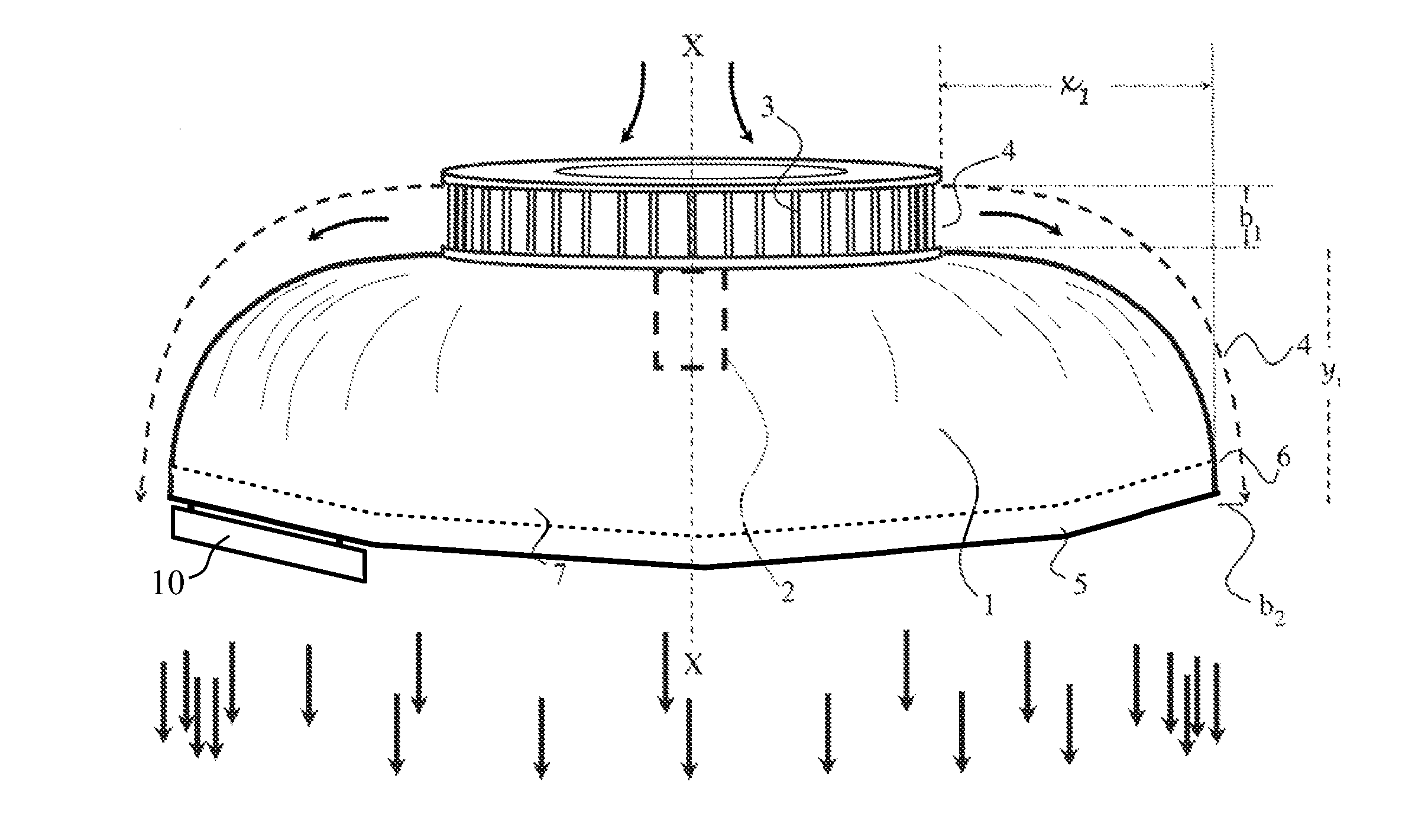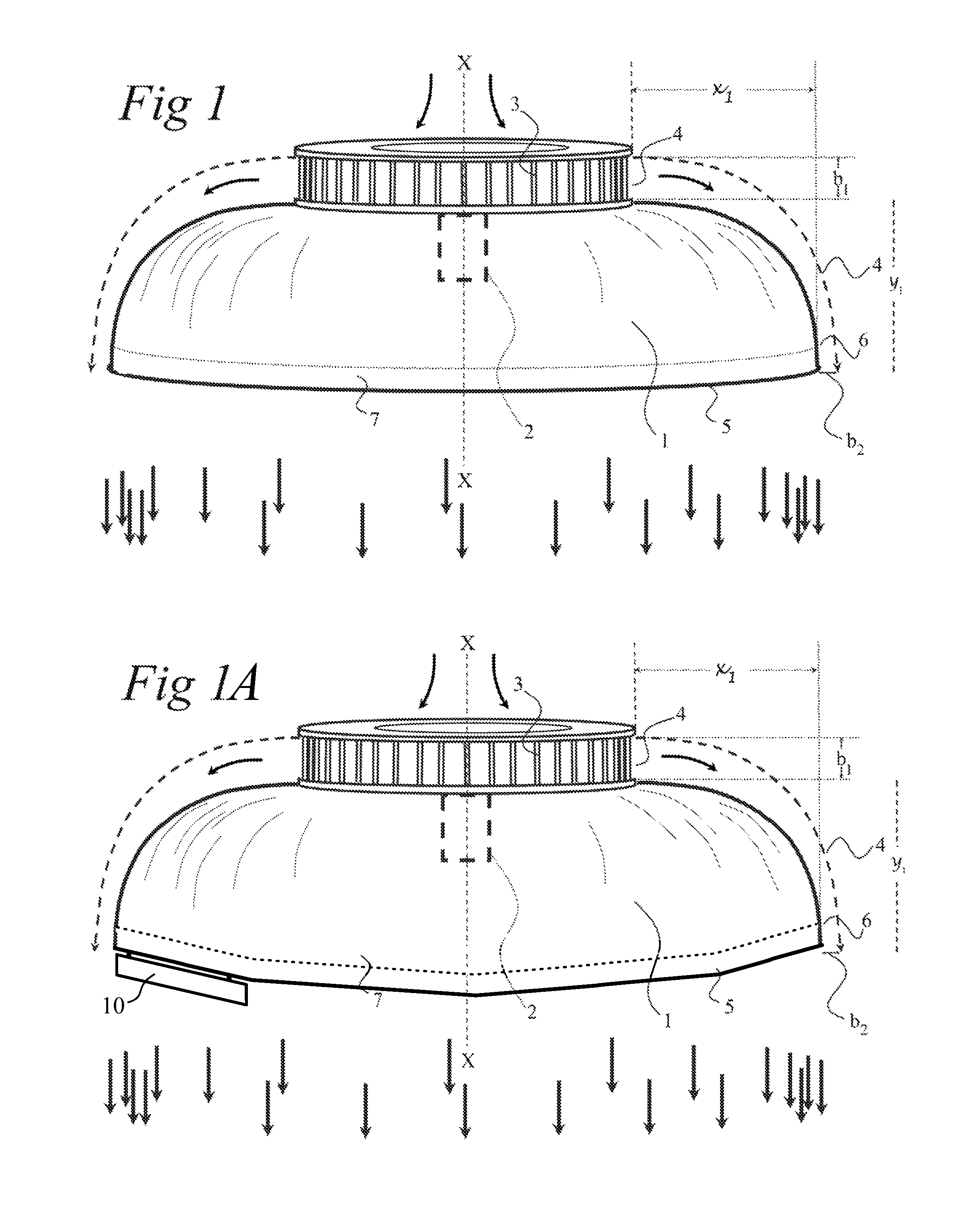Thrust generating apparatus
a technology of thrust generator and thrust generator, which is applied in the direction of vertical landing/take-off aircraft, flying saucers, aircraft navigation control, etc., to achieve the effect of convenient production, minimising surface area, and minimising drag
- Summary
- Abstract
- Description
- Claims
- Application Information
AI Technical Summary
Benefits of technology
Problems solved by technology
Method used
Image
Examples
Embodiment Construction
[0018]Referring to FIGS. 1, the illustrated aircraft comprises a dome-shaped canopy 1 supporting an engine 2 which in this particular embodiment is an electric motor. The motor 2 drives a radial fan 3 which propels air radially from a circular outlet slot 4 of height b1. The resulting radially flowing jet of air flows over the canopy 1 and is kept in contact with it by the Coanda effect until it reaches a bottom edge 5 where it becomes detached, forming a near-vertical annular jet. The downward momentum of this jet results in an equal upward momentum transferred to the aircraft.
[0019]FIG. 2A shows the precise curvature of the canopy, in the direction of flow of the jet, between the outlet slot 4, and a point 6, close to, but separated from, the peripheral edge 5. A cylindrical part 7 of the canopy surface between the edge 5 and point 6 is straight (in the direction of flow). This ensures that pressures are equalised on each side of the canopy surface where the jet leaves the edge 5,...
PUM
 Login to View More
Login to View More Abstract
Description
Claims
Application Information
 Login to View More
Login to View More - R&D
- Intellectual Property
- Life Sciences
- Materials
- Tech Scout
- Unparalleled Data Quality
- Higher Quality Content
- 60% Fewer Hallucinations
Browse by: Latest US Patents, China's latest patents, Technical Efficacy Thesaurus, Application Domain, Technology Topic, Popular Technical Reports.
© 2025 PatSnap. All rights reserved.Legal|Privacy policy|Modern Slavery Act Transparency Statement|Sitemap|About US| Contact US: help@patsnap.com



